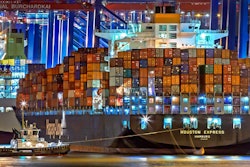
It comes as no surprise that U.S. importers have been experiencing a tremendous increase in cost of ocean freight. Ocean freight rates have been steadily increasing over the past several months. And, the reality is, there is no end in sight to these skyrocketing costs.
Global pandemics have global consequences, and the consequences created by the Coronavirus disease (COVID-19) global pandemic certainly bears that out. In the first quarter of 2020, China factories were forced to close down in an attempt to slow the spread of the Coronavirus. When those factories finally re-opened in the early part of the second quarter of 2020, order backlogs were their first priority.
Next came the need to fill new orders, which were coming in it at record levels. This dynamic created the first part of the “Perfect Storm.” With the worldwide lockdowns in 2020 as a result of COVID-19, a new dynamic was created.
People were forced to work from their homes and many still are and will be for quite some time. This phenomenon created a significant increase in the utilization of online shopping networks, to order merchandise they would normally pick up at a retail store. That was coupled with the fear of shortages of everyday necessities, which then created even more havoc in U.S. consumers’ buying trends.
Demand outweighed supply and that trend is continuing.
Fast forward to where we are today, and we not only see continually increasing ocean shipping costs, but we are now also experiencing major delays in getting products from Southeast Asia to North America. The main reason behind these delays is the lack of space availability on ocean carrier’s vessels, which is exacerbated by a shortage of available ocean containers to meet the importers’ shipping demands. In addition, with limited workforces at several U.S. ports, many ships are anchored offshore on the West Coast waiting for births to be unloaded. Recent estimates claimed that over 60 ships were waiting for their turn to unload their cargo at several West Coast Ports.
Some shippers are even considering purchasing their own ocean containers to alleviate the equipment shortage. How far this initiative progresses really remains to be seen. As with every move of the supply and demand pendulum, there are times when this would absolutely make sense, like right now. On the other hand, when the economy slows down, these importers may find themselves with a large supply of containers but no cargo to load into them.
This brings us back to the law of supply and demand, which has always been the difference between low and high shipping rates. The more ocean carrier capacity available, the lower the rates. Less ocean capacity available and we experience higher rates.
To give some perspective on the impact of the rate increases importers have been experiencing, back in the middle of February, the spot rate for shipments from China to the West Coast was approximately $4,000 per FEU. This represented an increase of almost 200% from the same period in February 2020. The spot rate to the East Coast was approximately $4,800, an increase of almost 75% from the prior year.
When you add in the additional costs of premium services, such as guaranteeing space on a particular vessel, some importers will be paying rates in excess of $6,000 to West Coast ports and $7,000 to East Coast ports per FEU. Add to that the additional charges importers are experiencing for detention and demurrage because of the inability to offload ships in a timely manner, you now have the second perfect storm.
Now, we are in the ocean freight contracting season, where shippers and carriers negotiate their annual contracts along with their minimum quantity commitments (MQCs). The challenge for the importers will be to balance the need to control shipping costs while creating strategies to ensure their goods will in fact make it onto the ships so that their inventory levels remain consistent.
This year’s ocean freight contracting season certainly does not bode well for importers. The odds are certainly in the carrier’s favor, at least at this point, and many shippers will be forced to negotiate contract rates that are much higher than budgets were drafted for. Supply and demand conditions will dictate the rates these companies will be paying in this latest round of contract negotiations.
How these logistics managers handle the pressure from C-suite to keep freight costs within their previously drafted budgets and ensure the proper supply of their goods from Southeast Asia will be a daunting and real challenge. And, now you have the third Perfect Storm.



















